Information from Yen Lap District Medical Center (Phu Tho) said that recently, this unit received male patient D.D.C (Trung Son commune, Yen Lap district) for examination after using a cotton swab to clean his ear and had symptoms of earache and tinnitus.
Through the endoscopy image, it was shown that the patient's ear canal had a lot of wax, the ear canal wall had damaged spots, and blood clots. The doctors proceeded to remove the wax, clean the ear and apply ear medicine for the patient.
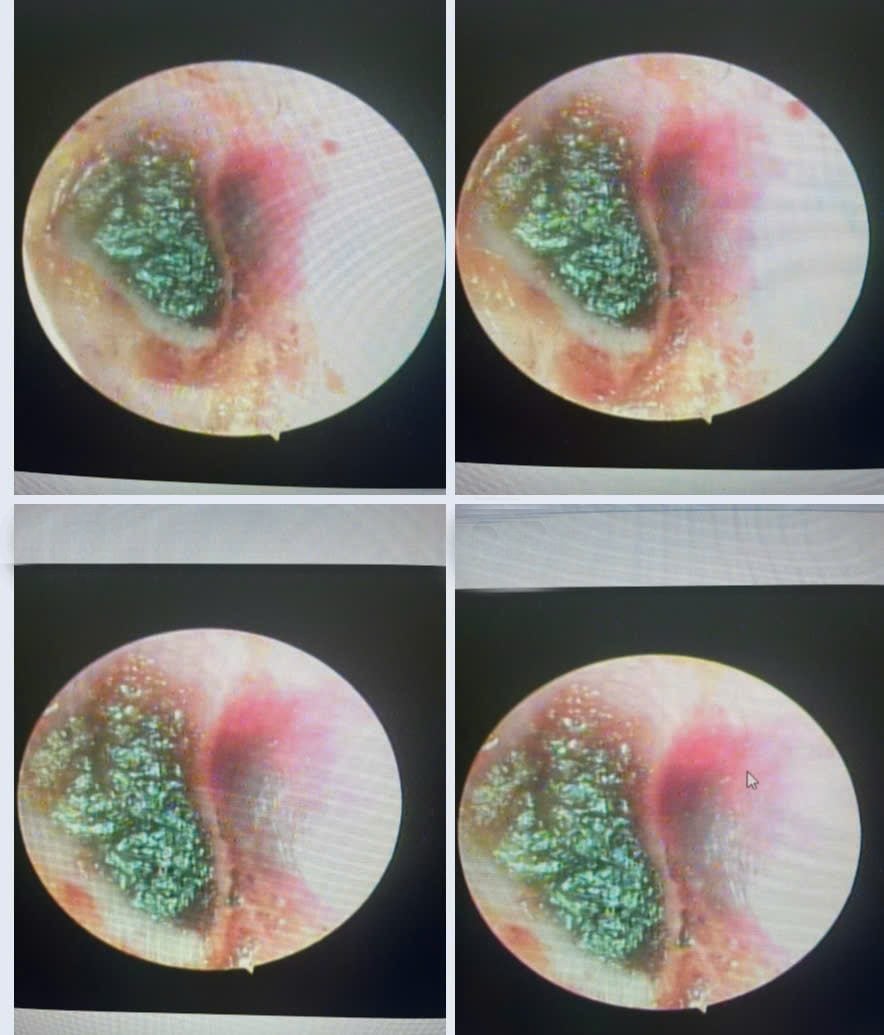
Image of damage to the patient's ear canal after using a cotton swab to clean the ear. Photo: Yen Lap District Medical Center.
Previously, at the ENT Hospital of Ho Chi Minh City, every month the hospital also received a number of cases of ear injuries due to accidents in daily activities related to earwax removal, including using cotton swabs to clean the ears.
According to Dr. Nguyen Thanh Vinh - Deputy Director of the ENT Hospital in Ho Chi Minh City, the habits that are harmful to the ears that most people have are using cotton swabs to dry their ears right after bathing, putting small particles or sharp objects in the ears (common in children), putting headphones in the ears with loud sounds for a long time... These actions seem very normal but they inadvertently damage the ears.
Regarding the habit of using cotton swabs to remove earwax, according to Dr. Duong Thanh Hong, ENT Hospital of Ho Chi Minh City, earwax is formed and becomes a protective layer of the outer ear canal. If you use cotton swabs to clean your ears, you can remove the protective layer of the outer ear canal.
The ear has a mechanism to push water and earwax out. During movement or chewing movements of the jaw, earwax is automatically pushed out. However, in some cases of wet earwax, a lot of earwax, or otitis media, you need to go to the hospital for appropriate treatment to avoid long-term effects on the ear and hearing.
The harmful effects of improper earwax removal
Doctors at Yen Lap District Medical Center said that improper earwax removal causes a number of consequences such as:
Scratched ear canal, causing infection
Using cotton swabs to clean your ears can introduce bacteria and fungi from the outside environment into the skin of the ear canal. Bleeding from the ear due to tearing of the skin of the external ear canal is one of the most common complications of ear cleaning.
Picking your ears this way can easily scratch the skin of the ear canal. When a wound appears on the skin, bacteria can enter and cause infection. In addition, it can also cause infection of the external ear canal, causing pain, discharge, tinnitus, and hearing loss.
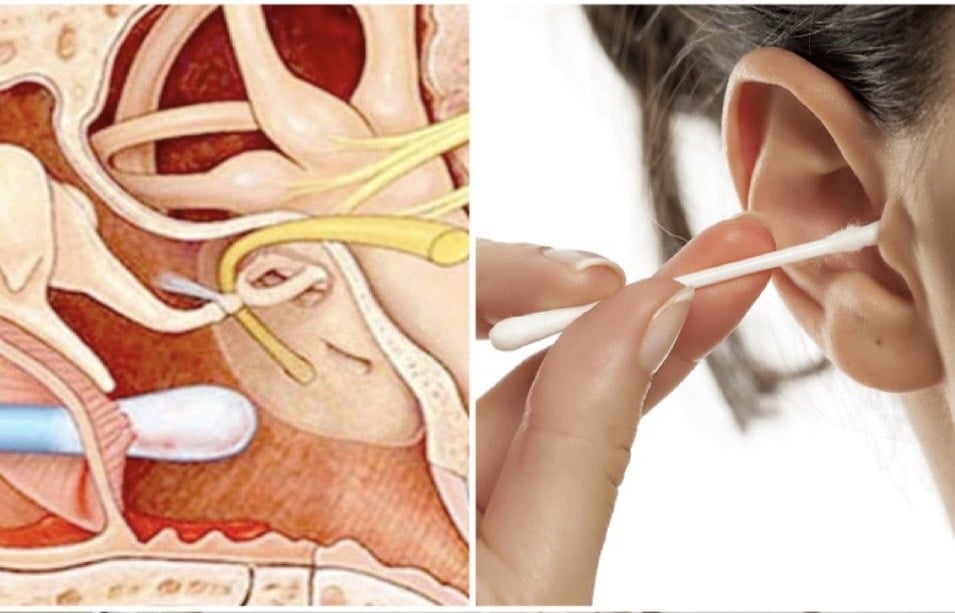
Using cotton swabs to clean your ears can potentially cause damage to your ears. Illustration photo.
Causes eardrum perforation, hearing loss
The habit of regularly using sharp instruments to clean the ears can accidentally perforate the eardrum, thereby causing hearing loss. If the eardrum perforation is left for a long time, it will cause mastoiditis, which will seriously reduce hearing ability and can cause more serious complications due to the infection spreading to adjacent areas. Some severe cases can also cause otitis media.
Pathogen infection
Some people have the habit of picking their ears to remove earwax after a haircut, so they need to be careful because it carries a high risk of infection from earwax removal tools that are shared with many people but not cleaned properly.
How to properly remove earwax at home
– Soak a clean cotton ball in saline solution. Lie on your side. Place the wet cotton ball in your ear and leave it there for 5 minutes. After 5 minutes, lie on your side again to let the water and earwax flow out. Use a clean cotton swab and a soft cloth to absorb and clean your ear. Continue with the same steps for the other ear.
– Use ear drops. Ear drops contain anti-inflammatory agents and are often used when removing dry and hard earwax. Be careful when cleaning and removing earwax to ensure safety and minimize risks. Do not use sharp sticks or cotton swabs to dig deep into the ear.
– Use a cotton swab, cotton ball or soft cloth to wipe and remove earwax on the outside after cleaning.
– Do not clean earwax too often. For young children, it should be done 2-3 times/month.
– When removing earwax, do so gently and carefully.
– During and after earwax removal or when noticing unusual signs in the ear, you should quickly go to the nearest medical facility to be diagnosed and receive appropriate treatment.


![[Photo] President Luong Cuong attends the inauguration of the international container port in Hai Phong](https://vphoto.vietnam.vn/thumb/1200x675/vietnam/resource/IMAGE/2025/5/13/9544c01a03e241fdadb6f9708e1c0b65)

![[Photo] Many people in Hanoi welcome Buddha's relics to Quan Su Pagoda](https://vphoto.vietnam.vn/thumb/1200x675/vietnam/resource/IMAGE/2025/5/13/3e93a7303e1d4d98b6a65e64be57e870)

![[Photo] President Luong Cuong awarded the title "Heroic City" to Hai Phong city](https://vphoto.vietnam.vn/thumb/1200x675/vietnam/resource/IMAGE/2025/5/13/d1921aa358994c0f97435a490b3d5065)
![[Photo] Prime Minister Pham Minh Chinh receives Ambassador of the French Republic to Vietnam Olivier Brochet](https://vphoto.vietnam.vn/thumb/1200x675/vietnam/resource/IMAGE/2025/5/13/f5441496fa4a456abf47c8c747d2fe92)
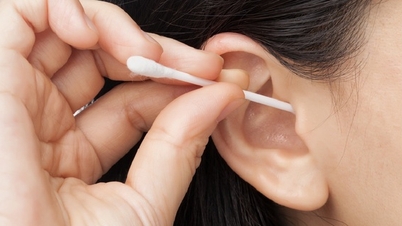

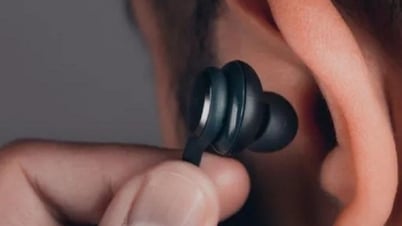









































































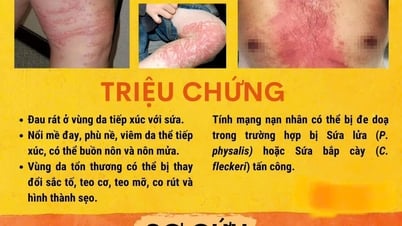










Comment (0)